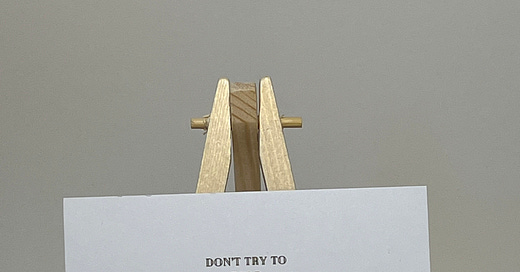I never knew what to do about that. I think writing poems helped me alleviate that worry - a bit of a distraction from the anxiety.
The word ‘worry’ comes from the Old English word ‘wyrgan’, which originally meant ‘to strangle’. Hmm, worrying can certainly take a vice-like grip on us with its ‘What Ifs’, robbing from us the enjoyment of the present moment. I call my worries my mind worms!
Worry can be split into two categories: hypothetical worries - ‘the What Ifs’ and practical worries - the ‘How To’s’.
What Ifs
I wonder how many of your ‘What Ifs’ have come true? If they have come true, did you manage to work your way through it? Ok, it may have been unpleasant, there may have even been some ugly face crying, but the earth kept turning and you kept on keeping on and things progressed to some resolution or other.
The reality is that:
‘What If’ worries don’t come true MOST of the time
When they do come true, you find a way through.
In my experience, at least, the most juggernaut kind of life events, the ones that knock you sideways, had normally never even ENTERED your mind as a possible issue.
Hmm, so worrying about the ‘What Ifs’ doesn’t actually help. It’s just fed by negative thinking and procrastination. Now, you CAN change both of those things, so if you recognise yourself as a What-Iffer (technical term) then looking at your negative bias and your blocks to action may be a better use of your time.
Years ago an American scholar, Thomas Kepler (1897-1963) wrote about a woman whose life had been blighted by interminable worry. She spent time examining her worries (I think that counts as worrying about her worrying) and from her notes concluded:
40% of what she worried about never happened.
30% of worries were about things that had already happened.
12% were about opinions held of her by other people.
10% were needless concerns about health.
So a whopping 92% of her worries were pointless.
So what if you are a What-Iffer? Is there a simple tool I can impart? Well, I’m glad you asked, because yes, there is.
‘And then what’.
Start with your worry, write it down, and then ask yourself, ‘And then what?’ and write your answer. In response to your answer, reply ‘And then what?’ Keep on doing this until you reach a natural conclusion which is likely to be ‘the whole world will explode’ which, to be fair, you really can do nothing about so you may as well let go of that worry, or you will find a reasonable solution… or it won’t matter.
Worrying is not big, not funny and not clever. It will not reduce the likelihood, nor increase the likelihood of anything happening; but it WILL increase your cortisol and adrenaline, which over time can give you physical symptoms, such as migraines and ulcers. THEN, not only will you be dealing with your original worries, but now you will have health worries to boot.
The likelihood is that you will have a vulnerable inner part of you that needs some reassuring. If you spend some time thinking about it you may find that what you fear now links back, in feeling, to some fear that you had as a child which did not get met; be that safety, security, attachment, approval, or love. Yet today, you are an adult, who can take steps to help soothe that inner child.
The How-To’ers
If your worry is a ‘How To’ worry, then really it may be connected to you feeling overwhelmed, which I have already mentioned in a previous newsletter that you can access here.
Different folks worry about different things, depending upon where you live, what age you are, what kind of relationships you have an so on. Yet relationships, employment, money, confidence and health are all heavy hitters. If these type of worries fit in to the ‘How-To’ category for you, then you are already onto a winner, because by examining the specifics about what ‘How-To’ you are worrying about, you can begin to take steps to change things.
If you are still struggling, then I suggest this exercise:
Look at this diagram of character strengths.
Think about a time that you hoped for something and got it. Which strengths did you use to help you get that? Now, thinking about those strengths that you have used before, could you use them to help you with your current ‘How-To’ worry?
Finally, mindfulness is a different avenue to help you deal with worries for when you need a break from your mind. Here is a link to an easy 20 minute meditation to help you let go of fear and worry.
That’s it for now, ‘til next time!




